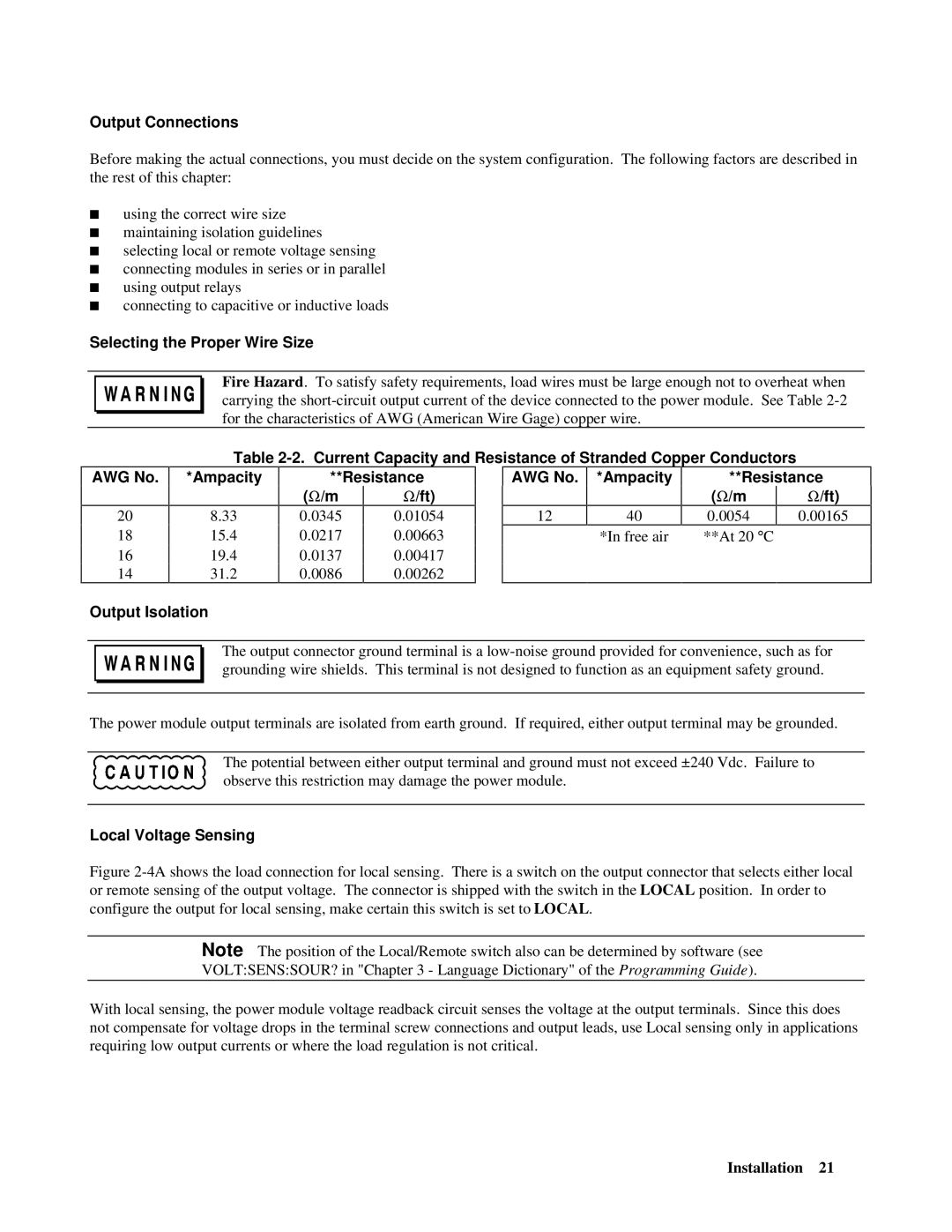
Output Connections
Before making the actual connections, you must decide on the system configuration. The following factors are described in the rest of this chapter:
■using the correct wire size
■maintaining isolation guidelines
■selecting local or remote voltage sensing
■connecting modules in series or in parallel
■using output relays
■connecting to capacitive or inductive loads
Selecting the Proper Wire Size
Fire Hazard. To satisfy safety requirements, load wires must be large enough not to overheat when carrying the
Table
AWG No.
20
18
16
14
*Ampacity
8.33
15.4
19.4
31.2
**Resistance
(Ω/m Ω/ft)
0.0345 0.01054
0.0217 0.00663
0.0137 0.00417
0.0086 0.00262
AWG No. *Ampacity
1240
*In free air
**Resistance
(Ω/m Ω/ft)
0.0054 | 0.00165 |
**At 20 °C |
|
Output Isolation
The output connector ground terminal is a
The power module output terminals are isolated from earth ground. If required, either output terminal may be grounded.
The potential between either output terminal and ground must not exceed ±240 Vdc. Failure to observe this restriction may damage the power module.
Local Voltage Sensing
Figure 2-4A shows the load connection for local sensing. There is a switch on the output connector that selects either local or remote sensing of the output voltage. The connector is shipped with the switch in the LOCAL position. In order to configure the output for local sensing, make certain this switch is set to LOCAL.
Note The position of the Local/Remote switch also can be determined by software (see
